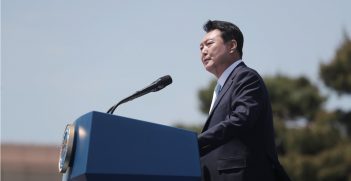Following the Money in the Pursuit of Gender Equality

Each International Women’s Day governments around the world renew their commitment to gender equality; however the reality often falls short because ambitions are not matched with adequate resources. Over the past 20 years gender responsive budgeting has been identified in numerous international forums as the key practical strategy for ‘following the money’ in order to meet both men’s and women’s needs, promote women’s empowerment and reduce gender inequality and poverty.
Gender responsive budgeting (GRB) initiatives seek to provide a gender analysis of the impact of policies funded by the budget and to influence the budgetary decision-making processes to promote gender equality. GRB is good budgeting as it aims to ensure fairness and capture the benefits to economic growth arising from improvements in women’s education, health and workforce participation. Furthermore, GRB seeks to foster good governance by enabling public resources to be allocated in line with agreed strategic priorities, with gender equality being recognised as a strategic priority by most countries.
Internationally, Australia is widely recognised for its contribution to GRB. It was the first country in the world to pioneer a GRB initiative in 1984 under the Hawke Labor Government, with state and territory governments following soon after. The centrepiece was the publication of a Women’s Budget Statement which provided a gender impact analysis of key government programs in the forthcoming budget, as seen by the responsible agency.
In its early years the Women’s Budget Statement provided a gender impact analysis of key government programs in the forthcoming budget, as seen by the responsible agency. This was innovative in that it sought to provide a baseline gender analysis and a mechanism for changing resource allocations in line with the government’s national strategy for women. By going beyond specifically targeted programs for women and girls and seeking to scrutinise all expenditures and revenues, the Australian GRB initiative provided an early example of a practical strategy for mainstreaming a gender perspective into economic policy.
The focus given to reducing disadvantages faced by women and girls through better policies and funding was linked with achieving better outcomes. The United Nations Platform of Action Committee in 2010 reported that during the first phase of GRB (1984-96) federal assistance to families with children increased by 27%, assistance to the aged rose by 24% and child care places for working women increased five-fold.
More recently, Australia has lost leadership on this issue. While some form of Women’s Budget Statement has been published by federal Labor and Liberal governments annually for 30 years, its analysis of gender impacts have weakened and its link with budgetary decision-making processes waned over time. An OECD survey of its member countries in 2011 identified Australia as one of the worst performers in imposing requirements to undertake gender impact analysis of legislation, regulations and budgetary programs and GRB. A requirement for GRB could take the form of a constitutional provision (Austria), a finance or budget law (France) other legislation (Belgium, Spain), a policy or regulatory requirement (Canada, Finland) or a high level political statement (Norway).
The survey results shown in the OECD’s 2014 Women, Government and Policy Making in OECD Countries report reveal that the federal level of the Australian government only ‘sometimes requires’ departments to conduct gender impact assessments on its planned programs and initiatives. Critically there was nothing to require departments to undertake gender impact assessments prior to or after the introduction of primary and subordinate legislation. In practice since 1996 the onus of producing a Women’s Budget Statement has been that of the Office for Women and the Minister for the Status of Women rather systematically requiring all government agencies (including Treasury) to integrate a gender perspective into their spending and revenue raising activities.
By contrast, the OECD outlines that a requirement to ‘always undertake GRB’ was reported by 47% of the 19 respondent countries, with France, Korea, Mexico and Spain having legislated the requirement into their finance or budget law. Switzerland indicated that it sometimes required departments to undertake GRB and Chile and Greece had plans to do so. Australia currently comprises a minority of comparable countries (36%) with no commitment to a strategy for mainstreaming a gender perspective into the key economic area of budgetary policy.
Worse, in 2014 the Prime Minister Tony Abbott, as Minister for Women, failed to publish any form of Women’s Budget Statement and did not introduce any alternative process, signaling a clear break with any federal government commitment to mainstreaming a gender perspective into the budget. The publication of the statement at budget time had contributed to accountability for commitments to women and gender equality: the fact that governments continued, albeit often at the last minute, to produce these statements indicated a recognition that women were a political constituency and gender equality was recognised as a legitimate policy goal.
Despite this setback, gender responsive budgeting continues in Australia through a number of alternative vehicles. There have been recent efforts by state governments such as Victoria to (re)introduce gender budget initiatives. The federal opposition government’s Women’s Budget Reply Statement issued for the 2014 and 2015 budgets is also an important GRB tool as it can contribute to improving budget debates and parliamentary outcomes from a gender perspective.
This leaves a greater role for civil society to promote GRB to increase the accountability of government for gender equality. The long-established independent work of the UK Women’s Budget Group and the South African Women’s Budget team have at times achieved a successful dialogue with government on policy and budget issues. An Australian NGO, the National Foundation of Australian Women, has taken up the challenge of applying a detailed gender lens to measures announced in the annual federal budget for the past two years. These analyses have highlighted the large negative impact of the government’s policies and budgets on gender equality with growing gender gaps in wages and income, responsibility for unpaid care work, superannuation, employment, housing affordability and freedom from domestic violence. However, while civil society GRB work is essential, it not a substitute for government undertakings as the later has different responsibilities, resources and accountabilities in policy and budget outcomes.
For the present, the federal government remains unwilling to undertake gender impact analysis and link this to resource allocation through a viable GRB strategy.
Professor Rhonda Sharp is an adjunct at the University of South Australia in the Division of Education, Arts and Social Sciences. This article draws upon her 2013 research paper written with Ray Broomhill, entitled A Case Study of Gender Responsive Budgeting in Australia. This article is published under a Creative Commons Licence. It may be republished with permission.






